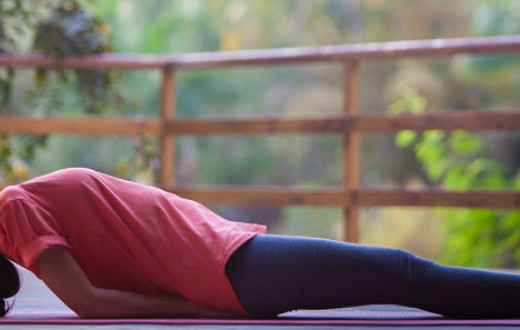Amazing facts about India.
- Discover the connection between Buddhism and Kalaripayattu
- Which famous place in South India depicts a wrestler in its name?
- You need to visit this place, if you’ve visited the Colosseum in India
The rush of watching a world cup final, or a major tennis tournament is adrenaline pumping stuff. An awe-inspiring display of human prowess, fitness, and resilience. Watching champions doing their best. These emotions are not new. Our civilization’s history is peppered with a passion for different sports. And India has been the birthplace of many.
Bharath Gyan, a passionate research initiative, is painstakingly dotting the pieces together, foraging amongst lost remnants to keep the glorious past alive and known. Here are some lesser-known facts:

India’s connection with jujutsu
Jujutsu, the famous Japanese martial art, has its origins in the Sanskrit word, yuyutsuhu, which means, “the desire or mentality to fight”. The word yuyutsuhu draws its roots from the word yuddha for fight.
A parent form of Indian contact sports is kara thandavam - a martial art form which is a dance of the limb. Kara is hands and thandavam is the ultimate dance.
Another very famous martial art form originates from Kerala - the kalaripayattu. Kalari means gymnasium or school. Payattu means exercise, fights. Tachcholi Othenan, who is considered to be the most renowned practitioner of Kalaripayattu in Indian history, has spread this art form far and wide.
Interestingly, Bodhidharma, a great Buddhist monk, was a Pallava prince from Kanchipuram and learned kalaripayattu. He traveled from South India to China around 760 CE. His objective was to spread Buddhism along with the knowledge of meditation or dhyan which became Chan in China and Zen in Japan giving rise to Zen Buddhism.
Kalaripayattu and yogmudra (hand positions) has influenced the evolution of kung fu and other martial art forms when Bodhidharma stayed and taught at Shaolin.
Thus, Bodhidharma took this knowledge with him to China and from there it spread to Japan and Southeast Asia. It developed into further variants there like karate and jujutsu.
From there, it spread the world over. Some of these continued with just their hands while some others included weapons as time evolved.
Dholavira - an Indian stadium
When people talk of the oldest stadium, naturally one’s mind goes to the 1,900-year-old Colosseum in Rome. It’s amongst the seventh man-made wonders of the world. This coliseum was constructed and inaugurated in 80 CE and was used regularly until 400 CE. While this is laudable, it is also interesting to understand the history from other parts of the world. Stadiums in India can be dated to around 4,500 years. The stadiums in Dholavira and Kuran in Kutch in Gujarat of the Indus Valley Civilization era were known to accommodate 10,000 spectators.
The rangbhoomi of Dholavira is believed to be twice as those in ancient Greece and Rome. The Indian words for these spotting arenas were rangbhoomi and the platforms were known as rangmanch. (Rang - colors, bhoomi - ground and manch - platform.) These arenas and stages were sites of colors.
Archeologist R. S. Bisht and his team, who were credited with the excavation of Dholavira, writes, “We found a multipurpose open field which must have been used for everything from sports like bullock cart racing to wrestling to plays.”
The stadium was a very popular part of the Dholavira settlement. One of the artefacts recovered from this rangbhoomi is a terracotta theater mask, used by the entertainers. Rows after rows of peg-holes were discovered indicating that they would have been used to erect stalls and dividers during performances.
Steps were excavated around rangbhoomi, indicating the location of the stands for the audience. The excavation showed that people seemed to add a layer of mud to their rangbhoomi every year. The mud was brought from outside the Dholavira settlement. This annual layering of mud gives the whole stadium and the stage a unique acoustics and sonorous quality.
Perhaps our modern day technology has been inspired to replicate the rich echoes from an ancient past.
Wrestling chronicles
Wrestling goes down to thousands of years in India. The Mahabharata, one of the world’s earliest literary records, depicts Krishna and Balram engaging in wrestling bouts with Chanura, a professional wrestler at Kamsa’s palace in Mathura. It began first as a sportive bout, but changed color when the evil intentions of Kamsa and Chanura to kill Krishna came to light. It ended with Krishna and Balram killing Kamsa and Chanura.
Krishna was 12 years of age at the time of the bout, around 3100 BCE. (Well, Krishna’s birth date is confirmed at 3112 BCE.)
Wrestling, thus, has been a continuous legacy from 5,100 years.
Wrestling has been called malyuddha (mal means wrestling and yuddha means a duet). This sport of wrestling was popular in South India too. Mahabalipuram, the ancient port city famous for its shore temple monuments, is still called Mammalapuram or Mammala. It was built by a famous Pallava King Narasimhavarma. Mammala or Mahamala in Tamil means the one who is renowned in wrestling. King Narasimhavarma was a great expert in mullayuddha.
Over a century-old sculpture from Karnataka shows the scene of a wrestling school - with female wrestlers! Women wrestlers were known for their prowess. To this day, it is a tradition to hold the malyuddha competition within the famous Mysore temple every year.
The material has been sourced from @bharathgyan. This research team, led by a passionate husband-wife duo - Dr. DK Hari and Dr. Hema Hari, unearth some of India’s untold stories and make them contemporary. You can click here to buy any of their books on Indian civilization.












